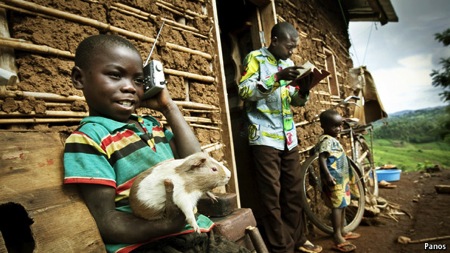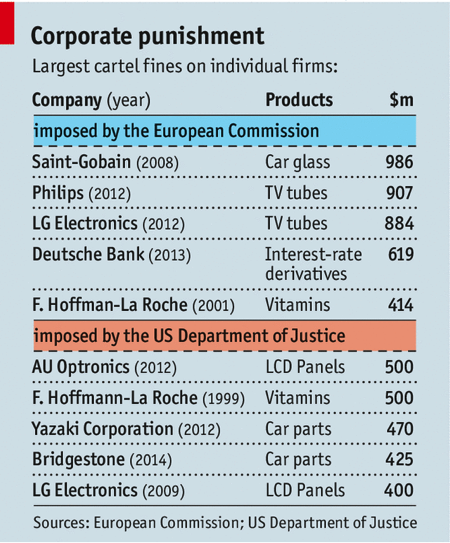- Gene bank of sources of spring wheat resistance to leaf-stem diseases. Crop wild relatives to the rescue.
- Evolutionary History of Wild Barley (Hordeum vulgare subsp. spontaneum) Analyzed Using Multilocus Sequence Data and Paleodistribution Modeling. Recently collected material gives different results to genebank accessions, suggesting geneflow during ex situ maintenance?
- Barley genetic variation: implications for crop improvement. “Contemporary plant breeders now benefit from publicly available user-friendly databases providing genotypic and phenotypic information on large numbers of barley accessions.” Barley Genebank Database Heaven? Should talk to the guys above?
- Detection of genetic integrity of conserved maize (Zea mays L.) germplasm in genebanks using SNP markers. Oh crap, that problem with ex situ barley maintenance is an issue with maize as well.
- Incidence of Seed-Borne Mycoflora in Wheat and Rice Germplasm. Oh, I give up, genebanks are doomed.
- Ethnophytopathology: Rice Fields Free of Diseases, from the Culture of Producers in a Nuquí, Chocó-Colombia´s Community. Careful placement of fields in the landscape ensures they don’t get diseases. Who needs genebanks and breeders?
- Farm production diversity is associated with greater household dietary diversity in Malawi: Findings from nationally representative data. Yeah, but settle down, it’s kinda complicated.
- Landscape fragmentation and pollinator movement within agricultural environments: a modelling framework for exploring foraging and movement ecology. Don’t know how your set-asides and whatnots are going to affect pollinators? Well, now there’s a spatially explicit model for that. Which could perhaps be applied to…
- Complex effects of fragmentation on remnant woodland plant communities of a rapidly urbanizing biodiversity hotspot. Would be so interesting to know if there were any socioconomically useful plants (including crop wild relatives) among these remnants.
- Gender, Seeds and Biodiversity. Whether in Pennsylvania or Peru, it’s women that save seeds. (This is from an old book, which has presumably just been digitized, hence its appearance in my RSS feed.)
- Land Use Dynamics, Climate Change, and Food Security in Vietnam: A Global-to-local Modeling Approach. Agriculture is at risk. Better collect all that germplasm. Right? Right?
- Responses of plants, earthworms, spiders and bees to geographic location, agricultural management and surrounding landscape in European arable fields. Mineral N and pesticides not good for agricultural biodiversity. Too bad you can’t really conserve earthworms ex situ.
- Identification and evaluation of major quality characters of introduced sweet potato germplasm resources. 4 accessions out of 32 from CIP were likely to prove very useful, for different reasons. I’d say that was pretty good.
- Conservation and use of genetic resources of underutilized crops in the Americas – A continental analysis. Some underused crops are more underused than others, but policies don’t help any of them much.
- And this week’s theme, I’ve just realized, somewhat belatedly, is the complementarity of ex situ and in situ conservation. No, really, go back and check. And it was purely by chance too.
Nibbles: Diverse diets, Ancient diets, Urban veggies, Medicinal phylogenetics, Double blind cowpeas, Adaptation hope, Livestock emissions, Climate change data, Afghani poppies, Aussie ag & breeders, Chinese agrobiodiversity, Weird cherry
- Meaty presentation on how biodiversity in the food system delivers a diverse diet. Could hardly fail to, really, could it.
- What’s a diverse diet ever done for me, asks ancient farmer.
- Vegetables an important part of diverse diets, of course. Especially in urban areas.
- Interesting EU project on the phylogenetics of medicinal plants. Any vegetables in there?
- Improved cowpeas only improved when farmers know they are improved. Wow.
- Some glimmers of hope on adaptation? Maybe.
- Not all livestock bad for climate change. And room for improvement on those that are.
- Yeah, but who cares, global warming is just a giant natural fluctuation, no? No.
- Legalize it, already! Poppy cultivation as a climate change adaptation measure?
- Australian agriculture unprepared for climate change? With all these fancy breeders and access to the world’s genebanks?
- Meanwhile, in China, the focus is on food sovereignty.
- And in Japan on its spaced out cherry tree.
Nibbles: Intensification, Wheat, Bees crisis
- Liberation: Proof, if proof were needed, that what you really need to snaffle EU funding is an acronym.
- Not just yields but nutritional value of staple crop threatened by climate change.
- Bee crisis still bad news for agriculture.
- Bee crisis still good news for researchers.
Nibbles: Rice intensification, Community genebank, Biodiversity & poverty, Borlaug, Deconstructing recipes, Biofortification conference, IPCC, Kenyan agricultural changes, Collecting wild chickpeas, African peanuts, Insurance for herders, Old fields, Millet fairs & diseases, GDP and malnutrition, Yeast evolution
- From SRI to SARI. Rice has never had it so good.
- Look there’s even a guy in Orisha who grows 920 varieties.
- Biodiversity conservation and poverty reduction: Unproven. Doesn’t sound like they looked at agricultural biodiversity though.
- Contrary take on the Borlaug legacy.
- From Map Your Recipe to Compare Your Recipe. h/t Rachel Laudan.
- Follow that biofortification conference in Kigali. Maybe they’ll talk about recipes.
- Guardian Environment blogger breaks down the agricultural bits of the IPCC report for you. Lots of that going around.
- No conceivable reason for growing jatropha in Kenya. One of those times when you wonder whether anyone had predicted this would happen at the time.
- So does anyone know now whether switching from coffee to banana might be a bad idea in the long run? This is your chance.
- Wild chickpea to the rescue.
- The ups and downs of groundnut research in Africa.
- Islamic insurance for herders. Demand, meet supply.
- Celtic fields can still be seen, if you know what to look for.
- Seed fair in Senegal exchanges pearl millet. Could usefully do the same in Namibia, it looks like.
- Does economic growth help in reducing child malnutrition? It depends on whether you plot % malnutrition against GDP per capita or annual change of the first against annual change in the latter.
- The complicated story of yeast, unravelled.
Agricultural biodiversity where you least expect it
Continuing our in-depth treatment of The Economist’s (unwitting?) coverage of agricultural biodiversity, two items in the most recent issue. First, consider this photo:

It’s from an article on the BBC World Service, and clearly shows the value of a radio in Africa. But what’s that the listener is holding? Could it be a cavy? I rather think it could, and of course one wouldn’t expect The Economist to mention its origins in the Andes. We, however, still want to know when they arrived, how they got there, and whether they are proving the “indispensable” option they were thought to be.
Then there’s this little table, from an article on price fixing and cartels.

See those innocuous little entries for F. Hoffman-La Roche, labelled Vitamins? Those reflect decisions more than a decade ago by the US and the EU to fine not just Hoffman but a bunch of other pharmaceutical companies for fixing the price of vitamin A supplements, proof enough of the economic value of treating vitamin A deficiency as a simple medical problem requiring a simple (and expensive) medical fix. And most of the time, synthetic supplements aren’t even that useful to the children who get them. How else might you improve vitamin A levels? Well, you could try promoting a more diverse diet. But where’s the profit in that?
p.s. I was slightly saddened to see that while Hoffman remains joint number 1 in the EU, it has slipped to a poor 5th in the US. So I ran the numbers through an inflation indexer, which brings the $500 million up to $705 million in today’s dollars, which at least bumps them up a place.